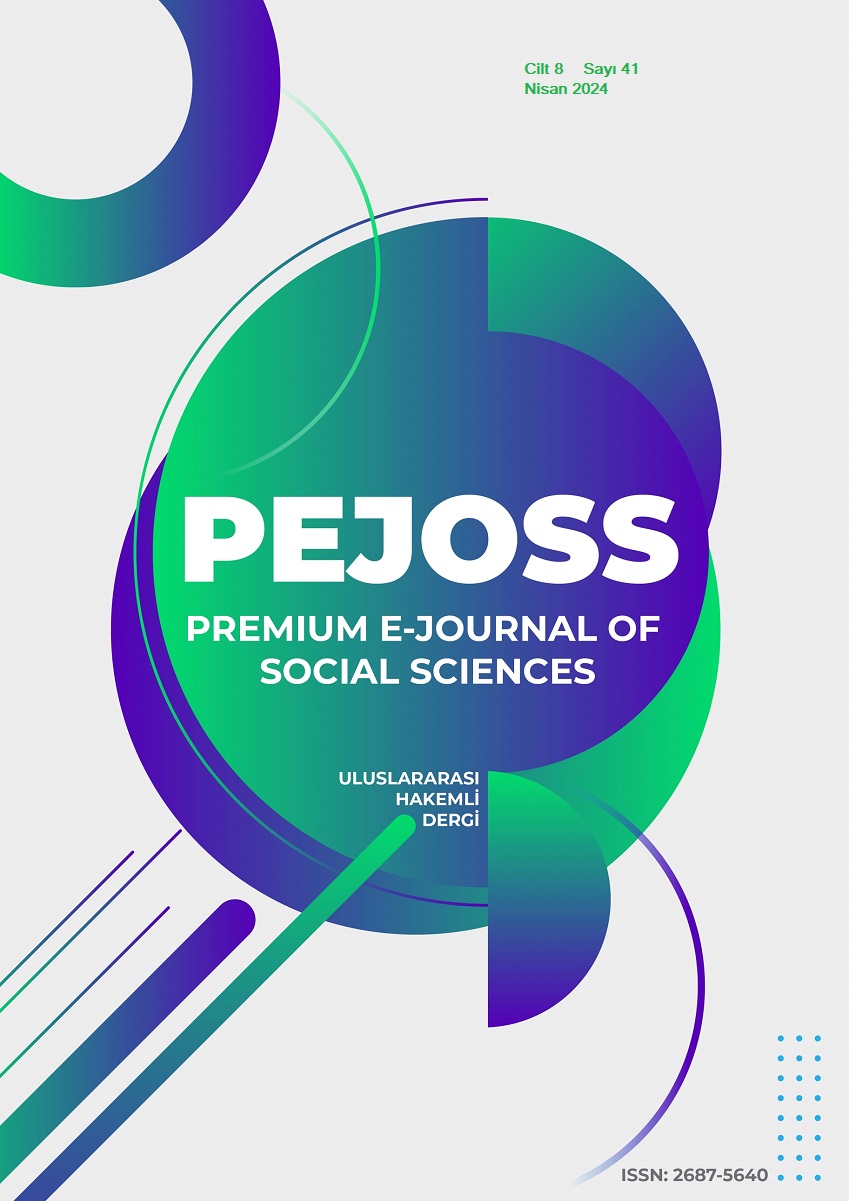Eğitimde Şeffaflık
DOI:
https://doi.org/10.5281/zenodo.11117278Anahtar Kelimeler:
Öğretmen şeffaflığı, hesap verebilirlik, saydamlık, eğitim-öğretim, öğretmen profesyonelliğiÖzet
Bu makale eğitimde şeffaflık üzerine yazılmış bir makaledir. Ayrıca bu makale eğitimde şeffaflığın önemini vurgulamak amacını taşımaktadır. Günümüz ekonomik ve politik durumunda eğitim; duyumsal kaynaklı olumsuz eleştiri ve çıkarımlarla çevrilmiş durumdadır. Aslında; güncel araştırma ve anketlerden yola çıkıldığında toplumun; okulların kabul edilebilir düzeyde hatta başarılı şekilde görevini ifa ettiğine dair bir düşünce olduğunu göstermektedir.
Okulların başarılı olup olmadığını denetleyen birçok farklı alan vardır. Bunları sağlamak için uygulanan yöntemlerin saydamlığına da şeffaflık denmektedir. Öğrencilerin test edilmesi ve onlara anket uygulanması, öğretmenlerin veya yöneticilerin şeffaflık derecesini göstermekte yeterince güvenli kaynak olarak gözükmemektedir. Öğretmenlerin görev ve sorumluluk bilinçleri arttıkça; öğrencilerle olan iletişimi arttıkça şeffaflık algıları arttığından, okul yönetimince ve merkezi teşkilat tarafından şeffaflık uygulamaları sağlayabilecek eğitimlerin sağlanması gerekmektedir.
İndirmeler
Referanslar
Atwood, V. (1991). Wait time and effective social studies instruction: what can research in science education tell us? Social Education, 179-181.
Ball, C. (2009). What is Transparency? Public Integrity, 293-307.
Barnes, D. (1995). Communication and learning revisited: making learning through talk. Portsmouth: Boynton/ Cook publishers.
Beadie, N. (1999). From student markets to credential markets: The creation of the Regents Examination System in New York, 1864–1890. History of Education Quarterly, 1-30.
Behn, R. D. (2001). Rethinking Democratic Accountability. Washington DC.: Brookings Institution.
Bernstein, R. (1983). Beyond objectivism and relativism: science, hermeneutics, and praxis. Philadelphia: University of Pennsylvania press.
Blasi, G. (2002). Reforming educational accountability. Los Angeles: UCLA School of Public Policy and Social Research.
Cooper, T. (2004). Big Questions in Administrative Ethics: A Need for Focused, Collaborative Effort. Public Administration Review, 395-407.
Cuban, L. (1990). Reforming again, again, and again. Educational Researcher, 3-13.
Dillon, J. T. (1990). The practice of questioning. New York: Routledge.
Dorn, S. (1993). Origins of the “dropout problem.”. History of Education Quarterly, 353-374.
DPT. (2023, Aralık 1). SEKİZİNCİ BEŞ YILLIK KALKINMA PLANI. Türkiye Cumhuriyeti Başkanlığı Strateji ve Bütçe Başkanlığı: https://www.sbb.gov.tr/wp-content/uploads/2018/11/Sekizinci-Be%C5%9F-Y%C4%B1ll%C4%B1k-Kalk%C4%B1nma-Plan%C4%B1-2001-2005.pdf adresinden alındı
Elmore, R. F. (1995). Opportunity-to-learn standards and the state role in education. Teachers College Record, 433-458.
Esbenshade, J. (2004). Monitoring Sweatshops: Workers, Consumers and the Global Apparel Industry. Philadelphia: Temple University Press.
Finel, B. (1999). The Surprising Logic of Transparency. International Studies Quarterly, 315-339.
Florini, A. (1996). The Evolution of International Norms. International Studies Quarterly, 363-389.
Fox, J. (2001). Vertically integrated policy monitoring: a tool for civil society policy advocacy. Nonprofit and Voluntary Sector Quarterly., 616-627.
Fox, J. (2007). The uncertain relationship between transparency and accountability. Development in Practice, 663-671.
Fung, A. (2000). Reinventing environmental regulation from the grassroots up: explaining and expanding the success of the toxic release inventory. Environmental Management, 115127.
Gall, M. D. (1984). Synthesis of research on teachers' questioning. Educational Leadership, 40-47.
Gold, K. (1998). Standardizing the summer school through state formation; school calendar reform in New York, 1840–1890. Chicago: Annual Meeting of the American Educational Research Association.
Green, T. F. (1980). Predicting the behavior of the educational system. New York: Syracuse University Press.
Kett, J. (1977). Rights of passage: Adolescence in America, 1790 to the present. New York: Basic Books.
Kirst, M. W. (1990). Accountability:Implications for state and local policymakers. Washington DC: U.S. Department of Education.
Krug, E. A. (1969). The shaping of the American high school, 1880-1920. Wisconsin: University of Wisconsin Press.
Labaree, D. F. (1988). The making of an American high school: The credentials market and the central high school of Philadelphia, 1838–1939. New Haven: Yale University Press.
Lee, H. W. (1991). The concepts of education. Seul: Muneum Press.
Manzo, K. (2001). Protests over state testing widespread. Education Week, 1-26.
Mitchell, R. B. (1994). Regime Design Matters: Intentional Oil Pollution and Treaty Compliance. International Organization, 425-458.
Noguera, P. (2002). Educating the new majority. Boston: Boston Globe.
Obama, B. (2006). Does the Legislative Transparency and Accountability Act? Congressional Digest, 139-147.
Orfield, G. (1996). Dismantling desegregation. New York: New Press.
Piaget, J. (1972). The child's conception of the world. New Jersey: Littlefield, Adams & co.
Ravitch, D. (2000). Left back: A century of failed school reforms. New York: Simon and Schuster.
Richter, J. (2001). Holding Corporations Accountable: Corporate Conduct, International Codes and Citizen Action. London: Red Books.
Rose, L. (2003). The 35th annual Phi Delta Kappa/Gallup poll of the public’s attitudes toward the public schools. Phi Delta Kappan, 41-52.
Rury, J. L. (1991). Education and women’s work: Female schooling and the division of labor in urban America, 1870–1930. New York: State University of New York.
Shaver, J. P. (1981). Citizenship, values, and morality in social studies. J. H. Davis içinde, The social studies: Eightieth yearbook of the National Society for the Study of Education (s. 105-125). Chicago: University of Chicago Press.
Sirotnik., K. A. (2004). Holding Accountability Accountable. New York & London: Teachers College Press.
Stahly, T. (1998). Curricular reform in an industrial age. Bloomington: Indiana University Press.
Swift, F. H. (1911). A history of public permanent common school funds in the United States, 1795-1905. New York: Henry Holt.
Thompson, D. (1987). Political Ethics and Public Office. Cambridge: Harvard University Press.
Tolo, K. W. (1999). The civic education of American youth: From state policies to school district practices. Austin: University of Texas.
Tyack, D. &. (1990). Learning together: A history of coeducation in public schools. New Haven: Yale University and Russell Sage Foundation.
Vaughn, R. (2000). Transparency—The Mechanisms: Open Government and Accountability. Issues of Democracy, 13-19.
Winne, P. H. (1979). Experiments relating teachers' use of higher cognitive questions to student achievement. Review of Educational Research, 13-49.
Yang, M. (2006). A critical review of research on questioning in education: limitations of its positivistic basis. Asia Pacific Education Review, 195-204.
Yang, M. K. (1992). A critical review of research on questioning in terms of its significance and problems in education. Seul.
İndir
Yayınlanmış
Nasıl Atıf Yapılır
Sayı
Bölüm
Lisans
Telif Hakkı (c) 2024 Premium e-Journal of Social Sciences (PEJOSS)

Bu çalışma Creative Commons Attribution 4.0 International License ile lisanslanmıştır.


